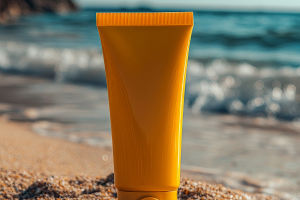
Choosing the right mountaineering or hiking shoes can make or break your outdoor adventure.
With advancements in technology and new materials, 2025’s selection of hiking and mountaineering shoes brings enhanced performance, durability, and fit.
Here’s a comprehensive guide to help you navigate the latest options!
1. Consider Your Terrain and Activity
Different terrains and activities demand different shoe features. Mountaineering requires shoes with more robust support and insulation, especially in cold and rocky environments. Hiking, however, may require lighter, more breathable options for extended comfort. Before purchasing, assess the terrain you'll be tackling:
For Mountaineering: Look for shoes with rigid soles for better traction on rocky, icy, or uneven terrain. High ankle support is essential to prevent twists and provide stability.
For Hiking: Consider lightweight shoes with moderate cushioning for comfort on long trails. Breathable uppers and flexible soles will make it easier to adapt to various terrains.
2. Footwear Materials: The Latest Advancements
The materials used in 2025's hiking and mountaineering shoes have evolved for better durability, weather resistance, and breathability. Key materials to look for include:
Knit Uppers: Some modern hiking shoes now feature knit uppers, which provide both flexibility and breathability, adapting to foot movement while maintaining comfort.
Recycled Materials: Many brands have moved towards using sustainable and eco-friendly materials, offering environmentally-conscious options without sacrificing performance.
3. Key Features to Look for in 2025 Footwear
Ankle Support: For mountaineering, a high-cut boot is essential to stabilize the ankle on rugged terrain. Hiking shoes may have lower ankle cuts for comfort but should still offer some support.
Cushioning: A shoe with proper cushioning absorbs impact, reducing fatigue over long distances. Look for shoes with EVA or PU foam mid-soles, known for their lightweight and long-lasting comfort.
Breathability: Especially for warmer climates or extended hikes, choose shoes with mesh panels or moisture-wicking linings. Proper airflow reduces foot sweating and discomfort.
Waterproofing: No one wants soggy feet. Choose shoes with waterproof membranes like GORE-TEX® to keep your feet dry, especially in wet or snowy environments.
4. Best Hiking and Mountaineering Shoes in 2025
Here are a few top contenders for 2025’s best footwear options:
La Sportiva Nepal Cube GTX (Mountaineering): Renowned for its durability and warmth, the Nepal Cube GTX offers excellent traction with a rugged Vibram sole. Ideal for alpine expeditions and extreme cold, these boots feature GORE-TEX lining and a thermal lining for insulation.
Merrell Moab 3 Mid Waterproof (Hiking): A more affordable option, the Moab 3 offers superior comfort and breathability with its breathable mesh lining and waterproof membrane. Its Vibram sole ensures solid traction on different trails.
5. Sizing and Fit: The Key to Comfort
In 2025, more brands are focusing on customization and providing a better fit for different foot shapes. Look for brands that offer half-sizes or shoes with adjustable lacing systems for a more personalized fit. Pay attention to:
Toe Box: A roomier toe box ensures that your toes aren’t cramped during long hikes or climbs.
Heel Fit: Ensure that your heel fits snugly without slipping. A good heel fit minimizes blisters and provides stability.
Width Options: Many brands offer shoes in various widths, which is vital for people with wider or narrower feet.
6. Break-In Period: Essential for New Shoes
Even though 2025 shoes are designed for comfort, most will still require a break-in period. New shoes, especially mountaineering boots, should be worn on shorter hikes before taking them on long treks or climbs. This helps to soften the materials, mold the shoes to your foot shape, and avoid discomfort during your adventure.
7. Maintenance Tips to Extend Shoe Life
A good pair of hiking or mountaineering shoes should last for many years, but proper maintenance is crucial. Clean the shoes after each use to remove dirt, mud, and salt. Waterproofing sprays can help rejuvenate the water resistance of your shoes. Regularly check for wear and tear on the soles and seams, and replace them when necessary to maintain peak performance.
Selecting the right hiking or mountaineering shoe is more than just picking a style you like. By focusing on the type of terrain, material features, fit, and comfort, you can ensure that your shoes will support you throughout your outdoor adventure.
With 2025’s innovative designs, there are more options than ever, allowing you to tailor your footwear choice to your specific needs. Whether you’re a seasoned mountaineer or a casual hiker, investing in the right shoes will make your journey safer and more enjoyable!


